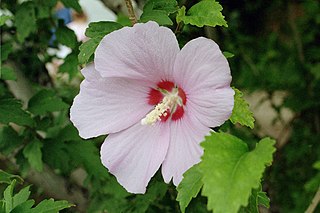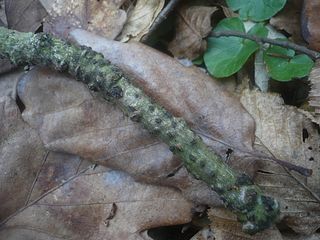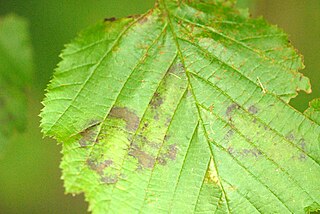
Hibiscus syriacus is a species of flowering plant in the mallow family, Malvaceae. It is native to south-central and southeast China, but widely introduced elsewhere, including much of Asia, both in the east and the west. It was given the epithet syriacus because it had been collected from gardens in Syria. Common names include the rose of Sharon,, Syrian ketmia, shrub althea, and rose mallow. It is the national flower of South Korea and is mentioned in the South Korean national anthem.

Pinus elliottii, commonly known as slash pine, is a conifer tree native to the Southeastern United States. Slash pine is named after the "slashes" – swampy ground overgrown with trees and bushes – that constitute its habitat. Other common names include swamp pine, yellow slash pine, and southern Florida pine. Slash pine has two different varieties: P. e. var. elliottii and P. e. var. densa. Historically, slash pine has been an important economic timber for naval stores, turpentine, and resin. The wood of slash pine is known for its unusually high strength, especially for a pine. It exceeds many hardwoods and is even comparable to very dense woods such as ironwood.

A plant canker is a small area of dead tissue, which grows slowly, often over years. Some cankers are of only minor consequence, but others are ultimately lethal and therefore can have major economic implications for agriculture and horticulture. Their causes include a wide range of organisms as fungi, bacteria, mycoplasmas and viruses. The majority of canker-causing organisms are bound to a unique host species or genus, but a few will attack other plants. Weather and animal damage can also cause stress to the plant resulting in cankers. Other causes of cankers is pruning when the bark is wet or using un-sterilized tools.

Citrus canker is a disease affecting Citrus species caused by the bacterium Xanthomonas. Infection causes lesions on the leaves, stems, and fruit of citrus trees, including lime, oranges, and grapefruit. While not harmful to humans, canker significantly affects the vitality of citrus trees, causing leaves and fruit to drop prematurely; a fruit infected with canker is safe to eat, but too unsightly to be sold. Citrus canker is mainly a leaf-spotting and rind-blemishing disease, but when conditions are highly favorable, it can cause defoliation, shoot dieback, and fruit drop.

Sonnet 54 is one of 154 sonnets published in 1609 by the English playwright and poet William Shakespeare. It is considered one of the Fair Youth sequence. This sonnet is a continuation of the theme of inner substance versus outward show by noting the distinction between roses and canker blooms; only roses can preserve their inner essence by being distilled into perfume. The young man's essence or substance can be preserved by verse.
Leucostoma persoonii is a plant pathogen, which causes perennial canker . On Species Fungorum the current name is given as Cytospora leucostoma (Pers.) Sacc., (1881)

Botryosphaeria stevensii is a fungal plant pathogen that causes cankers on several tree species including apple and juniper as well as causing cankers on grape vines. It causes branch dieback, possibly affecting a large portion of the tree canopy, and if severe it can kill entire plants.

Lasiodiplodia theobromae is a plant pathogen with a very wide host range. It causes rotting and dieback in most species it infects. It is a common post harvest fungus disease of citrus known as stem-end rot. It is a cause of bot canker of grapevine. It also infects Biancaea sappan, a species of flowering tree also known as Sappanwood.

Lepteutypa cupressi is a plant pathogen which causes a disease in Cupressus, Thuja, and related conifer types.
Coniothyrium fuckelii is a fungal plant pathogen, causing stem canker,) and that has also been known to cause infections in immunocompromised humans.

Valsaria insitiva is a plant pathogen, that causes perennial canker in apples and almonds.

Diaporthales is an order of sac fungi.
Bleeding canker of horse chestnut is a common canker of horse chestnut trees that is known to be caused by infection with several different pathogens.

Entoleuca mammata is a species of fungus in the genus Entoleuca. It is responsible for the plant disease hypoxylon canker in hardwood trees such as quaking aspen and other aspens and poplars, Salix myrsinifolia and other willow species, rowan, Sitka alder, birch, apple, oak, and hop-hornbeam.

Clara Henriette Hasse was an American botanist whose research focused on plant pathology. She is known for identifying the cause of citrus canker, which was threatening crops in the Deep South.

Ellison's Orange is an English cultivar of domesticated apple, it is a cross between the famous Cox's Orange Pippin and Cellini, which it resembles at most in looks and taste, but can develop a distinct aniseed flavor in storage. The variety is much more disease resistant than Cox's and therefore easier to cultivate.

Asteroma is a genus of pathogenic fungus in the family Gnomoniaceae, containing several species that cause leaf spot and canker on plants such as goldenrod, primrose, and Erythronium.

Cynthia Westcott was an American plant pathologist, author, and expert on roses. She published a number of books and handbooks on horticulture and plant disease. Westcott was nicknamed "The Plant Doctor", and is credited with starting the "first ornamental disease diagnosis business" in the United States. Her work was featured in The New York Times, House and Garden, and The American Home. She identified the cause of the plant disease Ovulinia azaleae and a novel treatment for it.
Alma May Waterman (1893-1977) was an American botanist, mycologist, and plant pathologist noted for studying diseases of shade and ornamental trees, as well as diseases of roses. The standard author abbreviation Waterman is used to indicate this person as the author when citing a botanical name.














